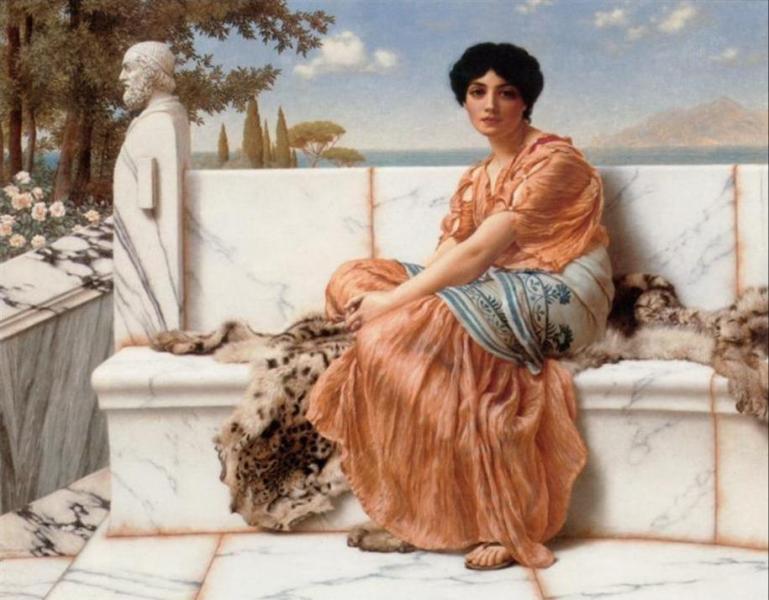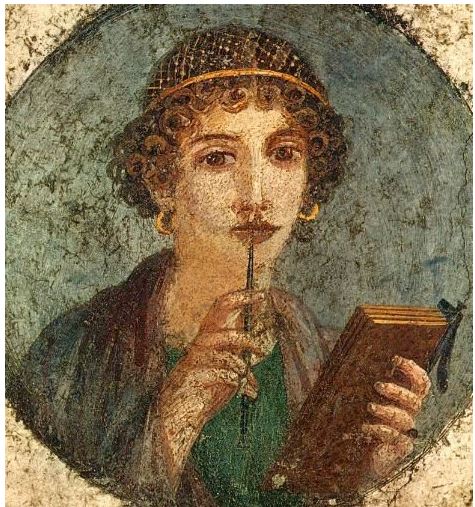- Read offline
- Access all content
- Use the in-app Map to find sites, and add custom locations (your hotel...)
- Build a list of your own favourites
- Search the contents with full-text search functionality
- ... and more!
Sappho
The Tenth Muse

The most famous and influential Eressian of them all was Sappho, born in c. 630 BC; Eressós proudly minted coins bearing her portrait. Little else is known for certain of her life: she was an aristocrat, was married to a certain Kerklyas of Andros and perhaps had a daughter, and ran a marriage school for young ladies, to whom she dedicated many of her poems.
Like her fellow islander and contemporary Alcaeus, she wrote what is known as melic poetry, personal and choral lyrics with complex rhythms (Sapphic stanzas) intended to be sung at private parties before a select company.
One of her songs dedicated to a young girl is the first, and rarely surpassed, description of passion: ‘Equal to the gods seems that man who sits opposite you, close to you, listening to your sweet words and lovely laugh, which has passionately excited the heart in my breast. For whenever I look at you, even for a moment, no voice comes to me, but my tongue is frozen, and at once a delicate fire flickers under my skin. I no longer see anything with my eyes, and my ears are full of strange sounds. Sweat pours down me, and trembling seizes me. I am paler than the grass, and seem to be only a little short of death...’

A strong tradition has it that she threw herself from the white cliffs of Lefkáda in despair over an unrequited love – for a man. Although Plato called her the ‘Tenth Muse’, her poems (mostly in fragments) have survived only by accident; declared morally offensive in 1073, her writings were burned in Rome and Constantinople.
Images by John William Godward, tonynetone

